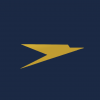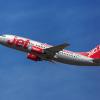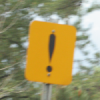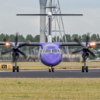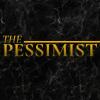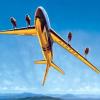
2023 East Asia Design Challenge
#1

 Posted 16 July 2023 - 05:26 AM
Posted 16 July 2023 - 05:26 AM

#2

 Posted 16 July 2023 - 08:10 AM
Posted 16 July 2023 - 08:10 AM

#3

 Posted 17 July 2023 - 06:45 AM
Posted 17 July 2023 - 06:45 AM

FUJI AIRWAYS
Full-Service
Japan | Tokyo Haneda
Modern (1981-2025)
#4

 Posted 17 July 2023 - 07:07 PM
Posted 17 July 2023 - 07:07 PM

Japan Sekura Airways
Low cost
Japan - Tokyo Nartia
Modern
#5

 Posted 19 July 2023 - 02:38 PM
Posted 19 July 2023 - 02:38 PM

Fuxing Airlines 復興航空
Full-service
Taipei, Taiwan
Modern
Fuxing Airlines is a Taiwanese passenger and cargo airline based in Taipei. The airline operates international services from Taiwan to Asia, Europe, North America, Australia, and the Middle East. Its main bases are Taipei Taoyuan, Taipei Songshan, and Kaohsiung. The name "Fuxing" is derived from the Chinese word “復興”, meaning revival or rebirth. When the airline was founded in 1996, it aimed to bring a rebirth to Taiwanese aviation by flying with highly competitive products and prices. The airline experienced massive growth, and by 2005, it had become a major player in the regional aviation market.
In 2007, the introduction of high-speed rail to Taiwan severely undercut the domestic aviation market. Additionally, the rise of low-cost airlines in the region put a damper on Fuxing’s regional operations. A major rebranding and service refresh were needed for Fuxing to remain a viable competitor. At this point, a major restructuring of the company occurred, and domestic operations were handed over to a newly formed subsidiary called Formosa Air, which inherited a fleet of six ATR72 aircraft. Plans were put in place to phase out old aircraft in favour of new additions. Previously, Fuxing had operated a fleet of A300s, 757s, 767s, MD11s, and MD90s. Orders were placed between 2010 and 2014 to introduce a next-generation fleet of A321, A330, 77W, and 789/78X planes. To complement their new fleet, a new corporate image was introduced, and marketing efforts to promote the airline and their frequent flyer program were increased, with a focus on competitively priced transit flights from South and Southeast Asia to North America through Taipei. The COVID-19 pandemic hit the airline hard. As Taiwan is an island nation, a majority of their fleet was grounded. However, it was at this point that Fuxing saw an opportunity to diversify its cargo ops. Prior to the pandemic, Fuxing operated a humble fleet of four MD11s retained from their passenger days, which were due to be replaced with six newer 777F aircraft in Q2 2020. The deliveries of the aircraft were delayed until Q4 2020 and Q1 2021, but they immediately became a powerful workhorse for Fuxing and a valuable source of income in trying times.
As of 2023, Fuxing is operating as strongly as ever. With regional and international demand recovering to pre-2020 levels, the company continues to innovate and grow. The mainline fleet currently consists of A321, A330, 777-300ER, 787-9, and 787-10 planes, supported by the ATRs at Formosa and the 777Fs at the cargo wing. Fuxing is also preparing to introduce the A321neo into its fleet, with the first aircraft expected in Q1 of 2024. The airline has also expressed interest in expanding its freight operation by planning to convert two older 777-300ERs into freighters by 2026. Additionally, the airline has numerous plans to expand and establish new routes to more destinations in Europe, North America, and Asia over the coming years.
Below you can find a selection of aircraft operated by Fuxing Airlines as well as some of my design choices going into making these.

This was Fuxing's initial livery and corporate identity. While making this, I wanted it to be eye-catching and relatively modern while also having a strange timeless feel to it, which is why I chose this kind of cheesy old-timey font (I was going for a Far East Air Transport vibe with the font). Fuxing is a brand that I made back in 2021, and the tail design is a play on the 757, which I had done back then. It's kind of camp, kind of anime, and gives off a kind of late '90s, early '00s feel.

Fuxing's rebrand - I cleaned up and altered the design which I previously had, and I really like the result. I feel like it's modern but has more character than my previous iteration. I stuck with the billboard Chinese text on the tail just to bring in that East Asian vibe and stick with the "anime" feel. The rebrand also brings around naming of planes, with this 787 named "Hualien" after the city and county in Taiwan.

I had to hop on the Pokémon jet trend that's sweeping across Asia right now. I've done a few in the past for Skywing, but for this one, I drew inspiration from the new wave that's come around (ANA's 787-9, Scoot's 787-9, Tway's 738, and Solaseed's 738). Growing up in Hong Kong, I can remember trading Pokémon cards and watching the cartoons as a kid, so I always have so much fun doing these.

This is the livery which I came up with for Formosa Air. I took inspiration, obviously, from Mandarin Airlines, but I was also intrigued by Alliance Air from India, which was previously a subsidiary of Air India. Their livery is not a direct copy of AI's but uses the same font and colors, which I found interesting and wanted to emulate that with Formosa.

Last but not least, the cargo division. I was going to do the MD as well, but by this point, I'm feeling a little burnt out and might just give it a go somewhere down the line ![]() . This one's pretty self-explanatory, just the Fuxing livery adjusted to include cargo. My inspiration for this was CI's new 777Fs and also the Thai Cargo livery, which they had on their 74s.
. This one's pretty self-explanatory, just the Fuxing livery adjusted to include cargo. My inspiration for this was CI's new 777Fs and also the Thai Cargo livery, which they had on their 74s.
#6

 Posted 20 July 2023 - 10:15 PM
Posted 20 July 2023 - 10:15 PM

TBC
Low Cost
Taiwan Taoyuan - TPE
Modern (1981-2025)
#7

 Posted 21 July 2023 - 01:50 PM
Posted 21 July 2023 - 01:50 PM

Silkroad Freight (L5 / SSU)
Cargo
Modern (1981-2025)
Lanzhou, People's Republic of China
Silkroad Freight (丝路货运)is a minor freight carrier based in Lanzhou. It commenced operations in late 2018 with a single 757 financed by China Fada Leasing, and has since grown to a fleet of six 757s and two 737 freighter aircraft. They operate charter freight services largely around the Western China and Central Asia region, with the most common route being between Urumqi and Lanzhou.
In essence, I tried to convey a modern design of a small Chinese carrier with inspiration from Central Airlines (中州航空)and SF. Honestly imo "Chinese" design as a whole is difficult to categorise, which is why the design of the aircraft livery is simple and can be interpreted in different ways. The centrepiece of the livery is the weave motif inspired by the carrier's name Silkroad. The rest of the livery contains a flowing curve/swoop which I thought of as a homage to the Gobi Desert and the routes through which Ancient Chinese travellers moved during the days of the namesake trading route.
The colours of the airline are also inspired by the colours of the Gobi Desert.
yada yada yada


#8

 Posted 21 July 2023 - 09:48 PM
Posted 21 July 2023 - 09:48 PM

NAME: Kochair (Hangugeo: 플라워에어)
CALLSIGN: BLOSSOM
Low Cost Carrier
Modern
IATA: KC
ICAO: KOC
HQ: Seoul Gimpo (GMP)
Secondary Base: Jeju (CJU)
Kochair is the largest LCC serving South Korea. It's name is derived from the Korean translation of "flower" or Koch (꽃) It has commenced operations in 2008 only serving domestic flights from it's HQ. The airline's inagural route was from Gimpo to Jeju, two major bases this airline served today. And over time, Kochair gained popularity in the country and accumulated more aircraft within the Airbus A320 series. They took advantage of the high demand East Asian countries require and expand to Japan and China. In Late 2010 the airline showed interest towards the A320neo and orders 20 of them as a possible replacement and innovation to product from the current A320's.
In 2011 the airline also obtained their first A321 allowing expansions to be made possible to farther destinations. The airline started routes to the Phillipines, Taiwan, Vietnam, and Thailand using the A321's on these routes.
Fast forward to 2014 and the airline gets it's first A320neo. The inagural flight was from Seoul Gimpo (GMP) to Tokyo Narita (NRT). It showcased many new features for better passenger experiences. Such as faster Wi-Fi, power outlets, better legroom, BYOD Entertainmnet and more. The airline had so much of a sucess with the neo that they decided to order 6 more of them.
In 2015 when the A321LR rolled out they ordered 14 of them to replace the A321's on current mid-haul routes. The A321LR used the same features that were new on the A320neo except the purpose of the A321LR was to fly longer mid-haul high demand routes that range from 5-7 hours in flight time. The A321LR's inagural also launched the airlines newest destination Singapore Changi (SIN) on December 20th, 2018.
Over time the A321LR and A320neo driven the airline to further success it has become today becoming a major LCC in the East Asian region, as many passengers are satisified with the efficiency and experience this airline has to offer and find Kochair as a reliable airline.

#9

 Posted 22 July 2023 - 09:32 PM
Posted 22 July 2023 - 09:32 PM

China Central Airlines | ZC | CCL | CHINA CENTRAL
Full Service
Guangzhou - CAN
Modern
 China Central Logo.png 61.93KB
1 downloads
China Central Logo.png 61.93KB
1 downloads
China Central Airlines was founded in 1989 after the split of CALA into Yangtze Airlines and China Capital as the first privately owned airline in China. The airline purchased most of the Soviet built aircraft that Yangtze and CCA didn't want, including taking over CALA orders for Tu-204s and Il-86s. However, growth was slow for China Central because of pressure on regulatory officials from Yangtze and CCA to stop the airline from ordering new planes and opening new routes. Finally in the early 1990s after numerous requests from China Central, the officials caved and have allowed the airline to grow to it's current status as the third largest carrier in China.
Current Fleet:
11 Airbus A319-100s
3 Airbus A319neos
84 Airbus A320-200s
47 Airbus A320neos
87 Airbus A321-200s
59 Airbus A321neos
22 Airbus A330-200s
24 Airbus A330-300s
20 Airbus A350-900s
28 Boeing 737-700s
143 Boeing 737-800s
28 Boeing 737 MAX 8s
5 Boeing 747-8s
12 Boeing 777-300ERs
15 Boeing 787-9 Dreamliners
21 COMAC ARJ21-700s
China Central Cargo:
4 Airbus A330-200Fs
19 Boeing 777Fs
On Order:
10 Airbus A319neos
46 Airbus A320neos
95 Airbus A321neos
2 Airbus A350-900s
29 Boeing 737 MAX 8s
1 Boeing 777-300ER
3 Boeing 787-9 Dreamliners
20 COMAC ARJ21-700s
20 COMAC C919s
Original 1989-2014 Livery:
 China Central 757-200 BG.png 208.96KB
0 downloads
China Central 757-200 BG.png 208.96KB
0 downloads
Current 2014-Present Livery:
 China Central 737-800 BG.png 162.89KB
1 downloads
China Central 737-800 BG.png 162.89KB
1 downloads
#10

 Posted 27 July 2023 - 12:23 AM
Posted 27 July 2023 - 12:23 AM

Korean Pacific Air Lines - 대한태평양항공
Full Service
Seoul, South Korea
Modern
Before I brievely go over the design of Korean Pacific, I must say at first that I really enjoyed working on this EADC submission and that I look forward to EADC 2024.
Korean Pacific is born from my idea to design a livery based on South Korea's national bird: the Oriental Magpie (Pica serica). Creating a livery based on elements of a specific bird and not the the figure of the bird itself (if you see what I mean) is something that I don't see often so I thought it would be pretty interesting to see how it would turn out. This specie of bird (Oriental Magpie) is a common symbol of Korean nationality and is traditionally very appreciated by Koreans, it is found in the cultural folkore of the nation and is seen as a bird of prosperity, good and luck, which seems fitting for the marketing of an airline based in Korea.
Thus, the tail design found in my livery is meant to be an elegant stylization of the Oriental Magpie's feathers featuring its greenish-blue-black colours, the way the stylization is, is also symbolizing dynamism and excellent service. The same can be said for the grey patterns on the fuselage, being an element that I added to avoid the livery being blank, and adds on the style this livery already uses. The Korean titles are put on the back of the fuselage for more uniqueness, and the Rolls-Royce logo on the engines is adapted to the colour theme and becomes blue and white-grey. The logo is itself a stylization of the feather pattern, albeit "lighter". To try to make the brand more "chic", I made the "KOREAN" in the logo bold and left "PACIFIC" like it is.
 Korean_Pacific3.png 378.63KB
4 downloads
Korean_Pacific3.png 378.63KB
4 downloads
Last but not least, credits for the templates used goes to SirFlyHigh and Meesj.
The photo used behind the Dreamliner is an image of Ulsan Rock, Goseong, South Korea that you can find here: https://english.hani...nt/1041920.html
[color=rgb(94,94,94)]
#11

 Posted 27 July 2023 - 11:42 AM
Posted 27 July 2023 - 11:42 AM

regretfully withdrawn
#12

 Posted 11 August 2023 - 02:44 AM
Posted 11 August 2023 - 02:44 AM

#13

 Posted 11 August 2023 - 01:39 PM
Posted 11 August 2023 - 01:39 PM

Regretfully Withdrawn... Again.
#14

 Posted 29 August 2023 - 06:02 AM
Posted 29 August 2023 - 06:02 AM

FujiFly
Low-Cost & Regional Carrier
Tokyo, Japan - Narita (NRT)
Modern (1981-2025)
#15

 Posted 02 September 2023 - 03:26 AM
Posted 02 September 2023 - 03:26 AM

#16

 Posted 03 September 2023 - 05:04 AM
Posted 03 September 2023 - 05:04 AM

Tempest 龙风
Full-service
Taipei, Taiwan
1990s - Modern


This livery is very conservatively designed and the tail logo is literally just the logo that the holding company TGC used by the time the airline was founded in the mid 1980s. Orange was actually the company's original primary colour due to the company's history (see below) and purple was frequently used by Tango Creameries' banking division to clearly contrast with the dessert side of the business. Designers chose to fuse the company's two primary colours and add a splash of teal to enhance the scheme. The colour scheme was virtually the only risk the designers made back in the early 90s but their goal was to play it safe and make a livery that just worked. Further, it is unlikely that they thought their work would persist for nearly 30 years. This livery was a bit hard to make because I think I have a tendency to over-design but the trend of over-designing really doesn't work for the 80s/90s period in this region particularly when I wanted it to be fairly clear that this was an airline managed by a giant investment bank that hasn't faced the public very much in over a decade.
For reasons explained below and explained in even more detail on the gallery post for the 787, TGC became Typhoon and TGA became Tempest in 2020 off of a rebrand that was actually designed around 2010. The new livery, shown on a 787, is a significant improvement over the old identity. The name, although a little odd for an airline, looks and sounds better in English and is simplified to two simple characters in the Chinese name. The livery seeks to build off of TGA brand loyalty by retaining a similar colour scheme and designing a new logo that fits the name and looks swish but also has a similar form the old TGC/TGA logo. The swoops on the fuselage reflect the motion of the logo and add to the feeling that this livery isn't as old and chintzy as the one its replacing. Bold fuselage titles and a much larger English name will (theoretically) allow the carrier to better compete on an international stage, particularly as it seeks to cement its position in the Trans-Pacific market. This one is simple and slick and I think works pretty well as something still rather conservative made reactively (not proactively) to prevent the airline from looking totally and unabashedly obsolete. I think this livery ends up looking a bit America coded (not just because of UA) but I think that works given Taiwan's unique status and also the fact that Typhoon's second largest market is the USA so design inspo from across the great blue seems reasonable.

I thought about finding a fun way to spill the beans on what I would personally consider to be some entertaining, unique, and relatively realistic lore and decided on the method attached below. I implore you to read it if for no other reason that entertainment value. The orange is like mango. Thank you for your consideration
Attached Files

#17

 Posted 03 September 2023 - 06:59 AM
Posted 03 September 2023 - 06:59 AM

#18

 Posted 03 September 2023 - 09:53 AM
Posted 03 September 2023 - 09:53 AM

FujiFly
Low-Cost & Regional Carrier
Tokyo, Japan - Narita (NRT)
Modern (1981-2025)
FujiFly is a Japanese low-cost carrier founded in 1994. It flies domestic and international flights (short-haul and long-haul). It is the oldest low-cost carrier in Japan.
The logo consists of a white stylized lowercase “f” in a turquoise green and red circle. It is designed to resemble an image of Mount Fuji, the tallest mountain and one of the iconic cultural symbols of Japan, which is also the reason behind the name “FujiFly”. The curvy outline of Mount Fuji can be made out in part of the red space underneath the “f”. The bright red-orange color was chosen to represent the color of Mount Fuji during sunrise just like in this photo. The “f” can also be stylized to resemble a crane flying upwards with wings. The choice of the turquoise green color above the “f” simultaneously represents the sky behind Mount Fuji while also alluding to the turquoise waters of the tropical resort destinations they had always aspired to fly to, and is also motivated by the fact that it is a lesser used color for airlines. The yellow horizontal lines represent speed. They evoke the motion of a plane or bird proudly flying past Mount Fuji. The “J” and “I” in the titles also form an outline of Mount Fuji. (I am sorry I could not also make a separate illustration with just the logo and not the aircraft; I ran out of time.)
FujiFly’s livery aims to translate the logo onto a plane effectively. At the front of the fuselage, there is a large FujiFly logo with the stylized “f” pointing forwards. I fit the logo onto the tail in a manner that I felt flowed better. This way, it ensures that people on either side of the aircraft will be able to view the “f” facing forward (to the right) in at least one spot. I decided to work with horizontal lines in the livery and challenged myself to design them in a manner that made it look timeless and not outdated like many older cheatline liveries out there. The horizontal lines suggest speed and directness. As you can see, the horizontal lines are connected to the logo at the front of the fuselage, giving the livery a smooth look.
History:
FujiFly was founded in 1994 in Tokyo. It established its first operating base in Tokyo Haneda International Airport. Its next operating base would be Tokyo Narita International Airport, where they would eventually consolidate their Tokyo operations in, for the most part, since it made more sense for their business.
Initially, FujiFly launched with a fleet of Boeing 767-300s leased from Japan Airlines. They added Airbus A320s in 1997. After a few years, FujiFly exclusively operated the A320. From that point onwards, the A320 family (A320 and A321) would become the backbone of their fleet.
For its first ten years of operation, FujiFly exclusively flew domestic flights, focusing on trunk routes between Tokyo, Osaka, Fukuoka, Sapporo, and Naha. Gradually, though, it expanded internationally, flying to destinations in Asia such as Seoul, Shanghai, Hong Kong, and Manila. In 2006, FujiFly would make its first foray into long-haul widebody flights with an interesting decision. It would acquire 4 used 747s from Japan Airlines (let’s pretend they were in the process of retiring the type at the time) and launch flights from Tokyo-Narita to Honolulu using the type, taking advantage of the large leisure travel market between Japan and Hawaii. (In 2009, an Osaka-Kansai to Honolulu flight was also added.) They would paint the 747 in a special livery, with each plane having a floral pattern with a different colored design.
FujiFly also ordered Airbus A330s (both -200s and -300s) in 2010, which made them Japan’s first A330 operator. They would use these aircraft to launch additional long-haul routes to destinations like Bangkok, Denpasar/Bali, Singapore, Cairns, Gold Coast, and Kailua-Kona. In 2015, they launched their first transpacific flights from Tokyo-Narita to Los Angeles. They would later go on to add transpacific flights to destinations such as San Jose, Las Vegas, and Calgary. As you can see, FujiFly is focused on serving tourist destinations popular to Japanese as well as areas with large O&D or VFR traffic to and from Japan.
Hubs:
Tokyo-Narita
Osaka-Kansai
Naha
Focus Cities:
Tokyo-Haneda
Fukuoka
Sapporo-Chitose
Fleet:
Airbus A320-200
Airbus A320neo
Airbus A321-200
Airbus A321neo
Airbus A321LR
Airbus A330-200
Airbus A330-300
Airbus A330-900neo
On Order:
Airbus A320neo
Airbus A321neo
Airbus A321LR
Airbus A330-900neo
 5D7344B4-0312-45DD-AC8B-7335AEEE551C.jpeg 45.68KB
1 downloads
5D7344B4-0312-45DD-AC8B-7335AEEE551C.jpeg 45.68KB
1 downloadsFujiFly A320
Credit to Med for the template.
#19

 Posted 20 September 2023 - 02:56 AM
Posted 20 September 2023 - 02:56 AM

0 user(s) are reading this topic
0 members, 0 guests, 0 anonymous users

 Sign In
Sign In Create Account
Create Account











 Back to top
Back to top